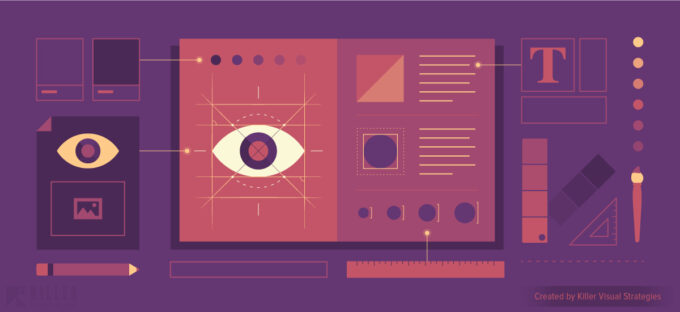Some may perceive a company’s logo as the definition of their identity; however, this is not an accurate statement. A business’s identity, its logo, and its branding are all independent aspects of the totality of the business’s or product’s perceived image.
Recently, there has been a lot of buzz on the web concerning the distinction between a business’s logo and brand. What is evident is there is not much along the lines of material that distinguishes a business’s “brand”, “logo”, and “identity.” To fill this lack of clarity, we will dive deeper into addressing the following questions:
- What is a brand? The perception of the full corporate image.
- What is brand identity? Visual aspects that form from the brand overall.
- What is a logo? A tool to identify a business in its most basic form.
Understanding what branding is and what it consists of is very important for your future brand management. However, if you are not a San Francisco brand agency, you would need to hire one to handle all of the brand design work for you. To see examples of such agencies, you can go to the Creatingonline article.
It’s essential that you let professionals handle all your branding needs because, otherwise, you will have to re-do it, spend your precious time and money, and ultimately end up with huge losses, given that brand design is never cheap. But for now, let’s focus on what branding is and how it functions in detail.
Let’s Define Branding

Branding is a loaded topic to digest. It has been the focus of hundreds of books and entire publications. To sum it up, however, a “brand” is the personality of an organization, product, or service, as defined by audience perception. In that sense, the designer of the brand cannot actually manifest the brand; they just lay the foundation. It is the audience that actually “makes” the brand.
There is a common misconception about a brand being simply a logo, perhaps with a particular set of colors or imprinted with some font types, or perhaps a catchy slogan with some music behind it. This is not, however, an accurate depiction. A brand is more than just a few loosely jointed elementsю It is, in fact, the essence of a business’s corporate image.
Anything that a company owns or produces and anything that a company does is a reflection of that company’s values. Based on those things, that outside of the company begins to form a particular view of that company. That view is the company’s corporate image. Throwing together a catchy slogan, or a multi-colored logo with cleverly placed fonts and considering it a brand is nowhere near enough. It is the illustration of a company’s core principles and a projection of what the company stands for and what they believe in.
Consider the IT giant Apple for instance. The company projects an image of a business that is well-rooted in both corporate culture and ethics, as evidenced by their contribution to good causes, volunteering, and involvement in their community. This stance is manifested through a full array of Apple’s actions, starting with the type of products they produce and how they market them, all the way through their approach to customer service.
By purchasing products from Apple, customers feel on some level that they are a part of a humanist brand, in the same way, a tribe member feels about belonging to a bigger unit with their emotionally shared goals. Therefore, a brand is manifested not from just a product or a small logo that marks the company who produced it, but rather the emotional link created between the company and its customers.
Let’s Define Brand Identity Design

One of the pivotal roles in a corporate image is the brand’s identity. Typically, identity design is based on guideline-driven visual devices. The guidelines lay out a framework for how the company’s identity is applied via the use of pre-approved layouts, measurements, color palettes, fonts, etc.
This assures brand recognition regardless of the medium the identity is applied through, allowing for a consistent and coherent projection of the image. There are a variety of visual devices that a company can employ to make up its brand identity. These include any visual aspects that represent a business, such as:
- Logo: An image or a symbol representing the brand and its identity
- Stationary: Images, fonts, and style that adorn the company’s business cards, envelopes, letterheads, etc.
- Products And Packaging: Easily identifiable utilities on the products themselves and the packaging they come in.
- Marketing: Depiction through websites, flyers, books, brochures, etc.
- Apparel Design: Identifiable items of clothing worn by employees.
- Signage: Specific design of a business location (both interior and exterior)
- Messages/Actions: Any messages between the company and the consumers through direct or indirect communication methods.
- Particular sounds, smells, touch, etc. associated with a brand
All of the above aspects combine to support the brand. But the company’s logo, specifically, is the company’s prime method of identification, wrapping the brand and corporate identity into one symbol, which therefore serves as the entire business’s avatar.
What is a logo?

Understanding the logo requires the comprehension of its purpose. A logo is a symbol, mark, flag, or signature that identifies and distinguishes a product or a company when it is used. A logo is not a sales tool, nor does it, by itself, describe a business. In fact, it is quite the reverse. Rather than defining the product’s quality, it is the product that defines the logo.
Logos are mainly present to identify the product’s association to a business, not to explain it. This means that it is more important to know what a logo represents than what it looks like. To better understand logos, it helps to think of each logo as an individual person. We identify by our names, not the complicated set of descriptive attributes about ourselves. It’s Mike, not the guy who wears black hoodies and goes to sleep late.
In the same sense, a logo helps to identify a business in a recognizable way, not describe what that business is about and what it stands for. Another key aspect to remember is that the logo only effectively functions once its association and what it represents is learned, in the same manner as we identify with people once we learn their names. Just like a person’s name, a logo is the simplest form of identifying a product or business.
The Bottom Line
Let’s summarize all of the above:
- Brand: The overall perceived corporate image.
- Brand Identity: Visual aspects that comprise the entirety of the brand.
- Logo: The simplest form (symbol, icon, or mark) of identifying a business.
Now that you know what to make out of all that branding nonsense, you can understand what things come first and require greater attention at different levels of your marketing campaigns. Find and hire a branding design company that will lead you through this labyrinth and out into the light.
A good branding company has an outstanding team that includes graphic designers, copywriters, web designers, and many other specialists in their respective fields that come together as one when working on branding projects.









